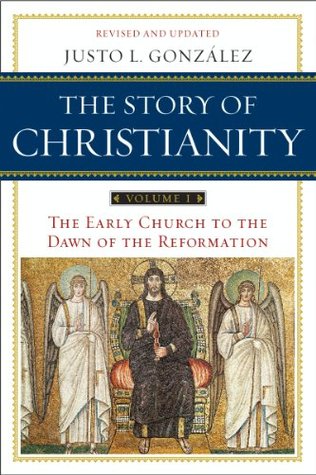More on this book
Community
Kindle Notes & Highlights
Read between
August 11 - October 9, 2017
what the leaders of the council sought was a recantation that would affirm the assembly’s authority, not a condemnation that would cause many to question its wisdom.
When he was tied to the stake, they gave him a last chance to recant, and once again he refused.
The Bohemians were indignant, and almost unanimously repudiated the council.
The Taborites rejected everything that was not to be found in scripture, whereas the true Hussites were willing to retain everything except what was explicitly rejected by the Bible.
the Word of God was to be preached freely throughout the kingdom.
communion would be given “in both kinds”—
all agreed that the clergy should be deprived of its wealth,
gross and public sin, especially simony, would be properly punished.
the Council of Basel had come to the conclusion that the Council of Constance had dealt unwisely with the Bohemian question,
This last defeat finally convinced the Catholics that negotiation was necessary.
the church in Bohemia rejoined the rest of Western Christendom, but was allowed to retain communion in both kinds as well as certain other elements of the Four Articles.
not all Bohemians accepted this agreement. Many left the established church,
What he said there about the evils of the time, and about the contrast between true Christian life and the love of luxury, offended many among the powerful.
He also reformed the inner life of the community, to the point that people commented on the holiness and spirit of service of the friars.
Savonarola’s prestige was such that the Florentines turned to him for guidance as to their form of government.
he believed that study should be at the center of the needed reformation.
under his leadership, there were periodic “burnings of vanities.”
Those great bonfires came to take the place of the carnival, the traditional celebration just before the beginning of fasting for Lent that Savonarola and his followers had banned.
from there his reformation expanded to other neighboring monastic houses.
Savonarola’s downfall was brought about by political circumstances.
It soon became clear to many Florentines that they were losing a great deal of their trade because their preacher insisted on keeping his word. Opposition to Savonarola and his policies grew among the wealthy.
Savonarola himself came to recognize that perhaps he had been too proud in his calls for reformation,
The only mercy they received was that they were hanged before their bodies were burned. All three died valiantly.
In spite of their many evils, and perhaps in part because of them, the fourteenth and fifteenth centuries were a time when mystics abounded.
According to Eckhart, all words about God are inexact, and therefore, strictly speaking, false.
all language about God is analogical, and therefore inexact.
true knowledge of God is not rational, but intuitive.
This statement, and others like it, led many to consider him a heretic.
Toward the end of his career, he was formally charged with heresy, and convicted of it. He then appealed to Rome, but died before the case was settled.
Eckhart, on the other hand, was not particularly interested in the historical time or the geographical place of biblical events.
Ruysbroeck’s mysticism was more practical, and more directly related to everyday life.
he insisted that, unless they had a genuine monastic vocation, they were to continue in their callings—the “common life”—and in them to follow the principles of the modern devotion.
Mystical contemplation as they saw it did not lead to turbulent emotions, but rather to an inner peace.
The mystic movement itself was not opposed to the church nor to its hierarchy.
most of them were content with the inner peace of their devotion, and felt no need to oppose ecclesiastical authorities.
But their teachings introduced a germ of doubt that in subsequent years would increasingly weaken the authority of the hierarchy.
monasticism was practically the only way in which to lead a life free from direct dependence on their fathers, husbands, or sons.
Whipping oneself in penance for sin was not new, since it was a common practice in many monastic houses. But now it became a popular craze, with little connection to the hierarchy of the church.
they were accused of seeking to usurp the “power of the keys,” given only to St. Peter and his successors.
Eventually, the practice of public flagellation was abandoned. But the movement continued a clandestine existence for several generations.
Having no leader and no center around which to rally, Böhm’s followers disbanded.
The last years of the Middle Ages were a time of unrest in which social causes joined with religious dissatisfaction and expectation.
In that atmosphere anticlericalism flourished, finding its basic inspiration, not in modern secularizing currents, but rather in ancient hopes of justice.
there were those who continued the traditions of scholastic theology;
there were those who looked back to classical antiquity for guidance and inspiration,
its constant search for ever subtler questions to pose,
the increasing rift between philosophy and theology,
the tendency of Western theology to make salvation a goal to be attained by human action reached its high point in late medieval theology,
the Reformation of the sixteenth century was to a large degree a reaction to these tendencies...
This highlight has been truncated due to consecutive passage length restrictions.
others began questioning the basic assumption of continuity between faith and reason.


